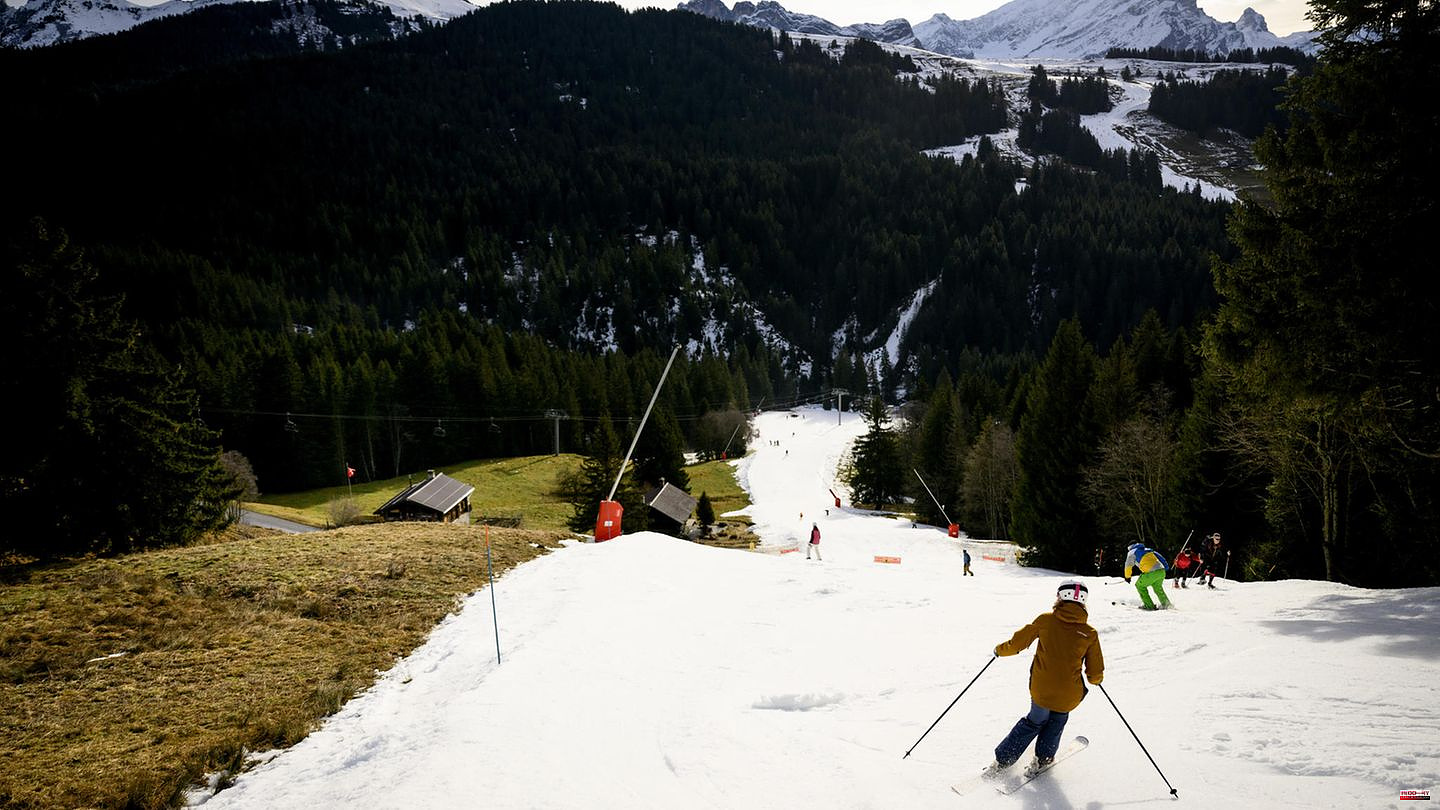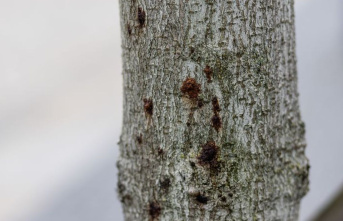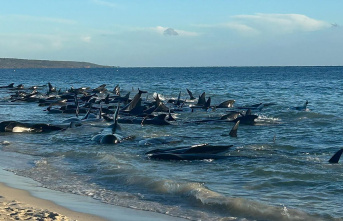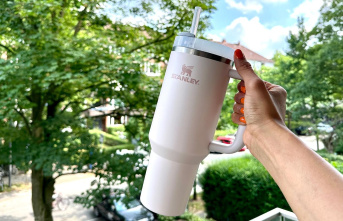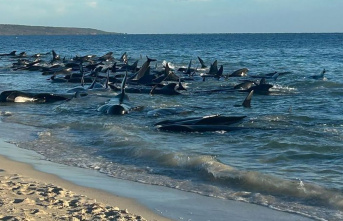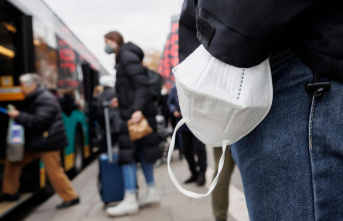Where otherwise thousands of holidaymakers go skiing and snowboarding, hikers and mountain bikers are more likely to be out and about this year. There is a lack of snow in numerous ski areas in Switzerland due to the mild temperatures. In many places it is too warm even for artificial snow. The mood in most ski areas is currently still optimistic, according to reports from the Swiss media. But in the long term, the ever warmer temperatures pose challenges for regions dependent on winter tourism.
The days between Christmas and New Year are the times of the year with the highest turnover in winter tourism, but the conditions for winter sports are currently poor, especially in the lower-lying ski areas. Pistes below 1500 meters are only available to a limited extent and only if they can be technically snowed, says Markus Berger, spokesman for Switzerland Tourism, at the request of "20 minutes". According to the Swiss news portal, only 32 of 75 slopes in Adelboden-Lenk, 22 of 70 in Gstaad and 31 of 83 slopes in Davos Klosters were open over the holidays.
There is slightly more skiing in the higher regions. According to self-promotion, the highest ski area in Europe near Zermatt with a view of the Matterhorn has lifts at more than 3000 meters. Around 100 of the more than 200 kilometers of ski slopes are open, half of the facilities are in operation. In the village itself there is only ten centimeters of snow. Nevertheless, all ski areas are equally well booked, reports Markus Berger, spokesman for Switzerland Tourism.
On the one hand, this is because you can still ski in many winter sports destinations. On the other hand, there are many additional offers such as wellness, ice rinks or indoor sports. In the ski areas, it is important to remain optimistic. In the Adelboden-Lenk ski region, "thanks to our efficient snowmaking systems, you can ensure a great foundation for the slopes," said Stefanie Inniger, the communications manager, in an interview with "Nau.ch". The Sörenberg ski area also relies on artificial snow. They have done the best possible to produce as much artificial snow as possible given the previous minus temperatures.
Elsewhere this is not an option. In the central Swiss holiday region of Sattel-Hochstuckli between Lake Lucerne and Lake Zurich, it was only possible to ski for two days this year – thanks to artificial snow. But it's too warm to produce new ones, explains Simon Bissig, Managing Director of Sattel-Hochstuckli, to the "Tagesschau". "Because the year was very mild, we had a high water temperature in the streams from which we take the water," says Bissig. Sometimes the temperatures first have to drop to minus five or six degrees so that the slopes can be covered with snow. There are similar concerns in the Graubünden ski area Hochwang. The lifts could only have opened thanks to donations, Patrick Angehrn, managing director of the sports railways, tells ZDF.
"In contrast to the large ski areas, we can only spread our fixed costs over a limited number of customers," he says. Reaching this critical mass is currently a challenge. Climate change and rising costs are hitting the smaller ski areas particularly hard. The high number of guests and the many hiking tourists don't help either, because they bring in significantly less income than skiers and snowboarders. In San Bernardino the ski area has been closed for ten years. There, the tourism industry has found alternatives for the winter that continue to make the place a popular holiday destination. For example toboggan runs, cross-country skiing and ski tours.
Other regions are trying to adapt to the current weather situation at short notice - they are increasingly focusing on summer tourism. "We have switched back to summer operations since Christmas Eve," says an employee in the Sattel-Hochstuckli ski area of the German Press Agency. Employees who are otherwise responsible for making snow on the slopes are now making the 600 meter long summer toboggan run. In the higher-lying winter sports resort of Flumserberg in eastern Switzerland, only a good third of the 65 kilometers of pistes are open. The region offers yoga and Pilates at an altitude of more than 2000 meters, a bouncy castle in the ski area and hikes accompanied by alpacas and goats.
Such adjustments could be the rule rather than the exception in the future. In the long term, it is about structuring winter tourism differently. The winter months of 2022 "should only be a foretaste of what can be expected in the coming years," writes the Swiss broadcaster. A research team from the University of Basel headed by Erika Hiltbrunner investigated whether long-term investments in the Andermatt-Sedrun-Disentis ski area are still worthwhile. Due to its high location and the early purchase of snowmaking systems, the region has a good starting position, so that, according to the scientists, the region could still serve as a ski area at least until the year 2100. However, this would require expensive technical systems to produce enough artificial snow.
"We noticed that the water requirement in the Andermatt-Sedrun-Disentis ski area will increase by 80 percent by the end of this century," explains the biologist Hiltbrunner. The costs would be passed on to the individual skier. "At some point, people with an average income will simply no longer be able to afford such vacations," she predicts. Not to mention the question of whether there would be enough water at all and the conflicts that could arise from the struggle for the resource. Artificial snow as a permanent solution seems unrealistic. When winters are getting warmer and warmer, it is important to reorient yourself, says Florian Möhl from the Grischa mountain sports school. "Nature is always stronger," he tells ZDF. "We are the ones who have to be flexible."
Sources: German Press Agency, "20 minutes", "Nau.ch", SWR, "Tagesschau", ZDF

